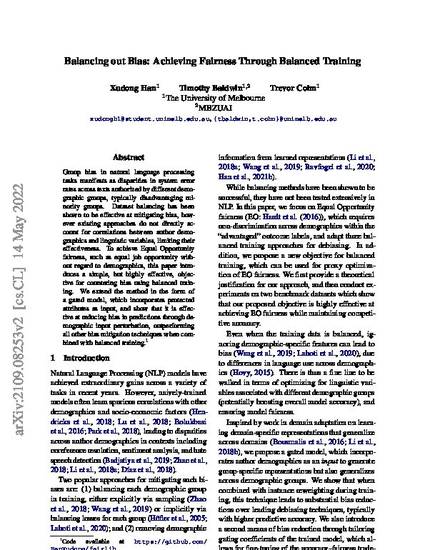
Group bias in natural language processing tasks manifests as disparities in system error rates across texts authorized by different demographic groups, typically disadvantaging minority groups. Dataset balancing has been shown to be effective at mitigating bias, however existing approaches do not directly account for correlations between author demographics and linguistic variables, limiting their effectiveness. To achieve Equal Opportunity fairness, such as equal job opportunity without regard to demographics, this paper introduces a simple, but highly effective, objective for countering bias using balanced training. We extend the method in the form of a gated model, which incorporates protected attributes as input, and show that it is effective at reducing bias in predictions through demographic input perturbation, outperforming all other bias mitigation techniques when combined with balanced training. Copyright © 2021, The Authors. All rights reserved.
- Modeling languages,
- Natural language processing systems,
- Syntactics,
- Balance methods,
- Demographic variables,
- Error rate,
- Evaluation methods,
- Linguistic variable,
- Minority groups,
- Model learning,
- Modeling task,
- Re-weighting,
- Syntactic parsing,
- Population statistics,
- Computation and Language (cs.CL)

IR Deposit conditions: non-described
Preprint available on arXiv